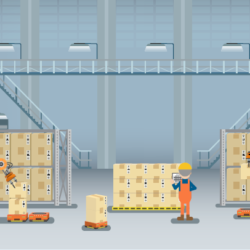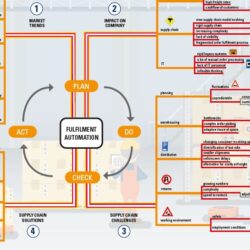Checklist for fulfilment automation

A series of forces are colliding to challenge the structure and operation of many supply chains and their ability to meet rapidly changing expectations for fulfilment of orders. Amazon Prime, same-day/next-day, the pandemic, shortages of labour, and underutilized retail stores and spaces are now all converging and forcing supply chain leaders to look at new ways to solve these new challenges.
Machine learning and robotics
Several retailers have publicly committed significant capital toward their automation strategies. For instance, Walmart plans to allocate nearly $14 billion for warehouse automation and other business areas. Asos announced $100 million in spending to expand the capacity and productivity of its warehouses.
These moves are indicative of an industry-wide focus on automation, now even further accelerated as a response to changing market conditions brought about by the COVID-19 pandemic. To start creating a supply chain operation capable of rapid flexing and changing requires new technology thinking. Technologies like artificial intelligence (AI), machine learning (ML) and robotics will be combined to overcome these challenges.
Robots will increasingly take on more of the responsibilities inside warehouses, while scarce labour resources will be deployed in more sophisticated software and technology-based roles that will be key to future success. Robotic automation will break old models of capital investment and open a new door to ‘as a service’ operational cost possibilities.
Download the checklist for fulfilment automation
GreyOrange, the global technology company unifying AI-driven software and mobile robotics, and Supply Chain Movement have drawn up a checklist to evaluate whether your business is set up for future-proof fulfilment automation. Answer these 10 questions and find out what the state of fulfilment automation in your company is.









